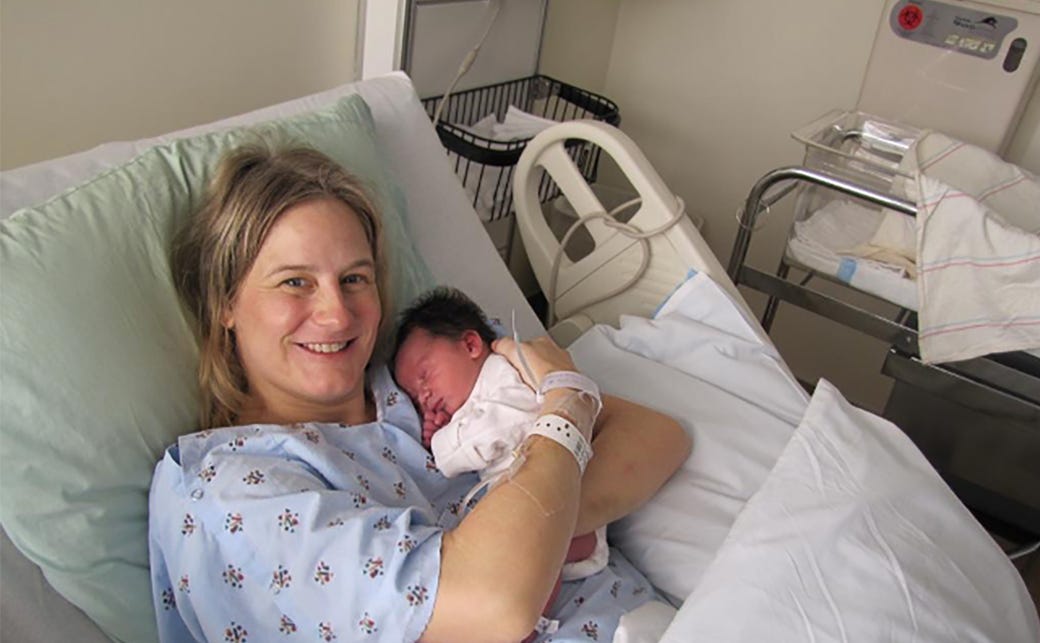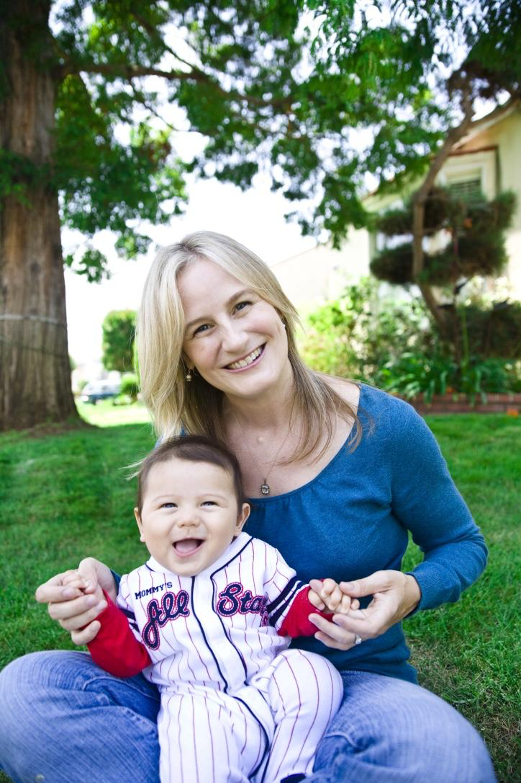
The Free Press

One of the things we value most about this community is that we have people with politics all over the map—on unions, on immigration, on the risks and opportunities presented by Big Tech, on whether America should intervene in Ukraine, on surrogacy, on the best way to parent. And on abortion.
Abortion is a topic we’ve covered extensively, from the ideologically motivated attacks on pro-life organizations, to the political backlash against the reversal of Roe v. Wade in Kansas, to the realities on the ground for women whose states banned abortions essentially overnight. We’ve devoted three episodes of Honestly to the subject and have worked to bring you the best, most thoughtful content on both sides of the issue.
This is a debate that tends to bring out the strongest passions because it touches on our most deeply held beliefs—about freedom, about choice, about the role of government, about women’s rights, and about life itself.
Abortion is right now in the news because on April 7, a judge for the U.S. District Court for the Northern District of Texas suspended FDA approval for mifepristone, the abortion pill, and made it illegal to send in the mail. On April 13, the Fifth Circuit Court of Appeals partially blocked the Texas ruling, but with strict limitations on how mifepristone may be dispensed. The Supreme Court temporarily suspended this decision, allowing access to the drug until it reviews the arguments. The court has indicated it will hand down a decision by Friday night.
In light of that news, today we have an essay by the writer Jenny Hontz about her harrowing pregnancy experience and during the birth of her son, and how that informed her views on abortion. If you have a story about how you landed on whichever side of this debate you happen to be on, please email tips@thefp.com. We’d love to hear from you.
—BW
I had no problem getting pregnant at 38. The problem was staying pregnant.
In the beginning, things seemed normal. Healthy and energized, I was working and teaching yoga through my 27th week (just over six months). Then, suddenly, my abdomen started tightening at regular intervals, and I knew I was going through contractions far too early. I went to the doctor, who diagnosed me with an “irritable uterus,” and prescribed bed rest and pills to prevent the contractions from progressing.
I spent the next month glued to my couch. Any time my contractions started coming faster, I rushed to the hospital for a shot of terbutaline, a drug that, at the time, was widely used for slowing down the birthing process. (It now contains a boxed warning, the FDA’s most serious, against this usage.)
One month into this ordeal, the meds completely stopped working, and my contractions grew more frequent and intense. Doctors admitted me to the hospital and hooked me up to an IV to give me magnesium sulfate to halt preterm labor. At first I felt relieved: a fetal heart monitor was attached to me around the clock, and if any quick action were needed, I knew I was in the right place.
But spending so much time in one small room with beeping machines, soul-sucking fluorescent lights, and only one window made me feel like the world was closing in on me.
Hooked up to various tubes and wires, I was unable to get up and even walk to the bathroom, and I had to lie on my left side because doctors believed other positions were riskier for the baby. My husband visited me frequently and even crawled into my hospital bed to sleep next to me one very difficult night, but because he also had a job, he could spend only brief periods by my side.
Days dragged into weeks. There was no way for me to work, but it was very hard not to Google search (one-handed, on my laptop) all that could go wrong if my baby boy was born too early: sepsis, blindness, cerebral palsy, impaired learning, hearing loss, behavioral and psychological problems, an increased risk of Sudden Infant Death Syndrome, and more.
I knew that each day I kept my son inside me, the better his prospects. But I was losing my mind. I had to beg nurses to wheel me out on a balcony to get one hour of sunlight a day. They initially refused, but I argued that even prisoners get an hour of yard time for outdoor exercise a day.
Eight months in, after two months on bedrest and about a month confined to a hospital bed, doctors finally told me I could go home. At this point, continuing to lie in bed presented a greater risk to my health than the risk my son faced being born a month early. But as soon as they removed the IV, my contractions kicked into high gear, clenching tighter and faster. I was moved straight to a delivery room with my husband at my side.
For the next 39 hours, I tried to push my baby out while excruciating pain stabbed me in the abdomen.
When a nurse noticed my baby’s heart rate plunging, doctors ordered an emergency C-section to save his life. My body shook uncontrollably as I was rushed into the operating room. Awake the entire time, I could see nothing with a curtain draped across my midsection, but I could hear my doctor bragging that his C-section cuts were so low I’d be able to wear a bikini without my scar showing. Vanity was the furthest thing from my mind.
And then suddenly, I heard my baby cry. My husband cut the cord, brought our son out from around the curtain, and held him close to my head. Tears of joy—and relief—streamed down our faces. He was 6 pounds 5 ounces and 18 1/2 inches long, with a full head of dark hair that stood straight up, just like my husband. His name was Maxwell.
But within moments, nurses whisked Max away, and doctors continued to work on me. I asked if everything was okay, and that’s when my surgeon said I’d had a placental abruption. I later learned this happens when the placenta separates from the inner wall of the uterus before delivery, leading to shock, heavy bleeding in the mother, and even organ failure. Fortunately, the abruption in my case was only partial, which meant I would survive it. I was lucky. Placental abruptions account for 5 to 8 percent of maternal deaths.
Thank God, I wasn’t one of them. Maxwell is now 13. He’s getting straight As and plays soccer and just learned to solve a Rubik’s Cube. But lately I find myself thinking back to Christmas Eve 2009, when I was stuck in the hospital, essentially chained to a bed, and the decade-plus of raising a child that has followed and I think: I was willing to do almost anything to save my son. But I did not want to die.
After the Supreme Court overturned Roe v. Wade last summer, I started to wonder: What if I had lived in a state that banned abortion and I had not wanted this baby? What if the risks to my health had been too serious to continue my pregnancy? What if I’d had other children at home who needed me, but the doctors in my state felt the law required them to put my very life at risk to save a dangerous pregnancy?
That calculus is going to become more and more common across America. On April 12, three Republican-appointed judges ruled that mifepristone, a key abortion pill used in more than half of all abortions in the U.S. and often taken at home, should not be shipped to patients’ homes, despite its FDA-approved status since 2000. This has not yet gone into effect, but the same Supreme Court that struck down Roe v. Wade could decide the fate of the drug as early as Friday—and with it, the fate of millions of American women. Many of them will be forced to give birth in states where abortion is no longer legal, and chances are some will face similar trauma to mine—with far more tragic outcomes.
In Ireland, there was once a blanket ban on abortion, where the life of an unborn fetus was given the same value as the life of its mother. This led to the death, in 2012, of Savita Halappanavar, a 31-year-old Indian-born dentist. Savita was 17 weeks pregnant when a sudden infection caused her to start giving birth. Miscarriage was inevitable and there was zero chance the fetus could survive. And yet, doctors refused to abort her child while a fetal heartbeat could still be detected, and she died from septic shock. Savita’s death galvanized the country and spurred Ireland to reverse its strict abortion ban.
Since Roe was overturned, 13 states in the U.S.—including Missouri, Texas, and South Dakota—have full bans on abortion, including in the cases of rape or incest. In Georgia (and soon, likely Florida), abortions are legal only up until six weeks—when many women don’t know they’re pregnant. Abortion bans in six more states are blocked until courts decide whether to allow them.
The new abortion laws do not prevent abortion in the case of saving the mother. But already women are saying in the post-Roe world, their lives have been put at risk because doctors fear possible prosecution.
In March, five Texas women sued the state after they were denied medically necessary abortions even though none of their babies stood a chance of survival. The suit argues that the state’s strict laws are scaring doctors and exposing women “to risks of death, injury and illness, including loss of fertility.” It is now “less likely that every family who wants to bring children into the world will be able to do so and survive the experience,” the suit states.
Texas also allows private citizens to sue providers and anyone who helps a woman seeking an abortion after the six-week mark. Doctors can lose their license to practice, face $100,000 in fines, and even get up to 99 years in prison for offering abortion care in the state. One man, NPR reports, has already brought a claim against the women he says helped his now-ex-wife obtain abortion pills.
Forcing women to continue a doomed pregnancy has led to some appalling consequences. In October, 35-year-old Texas mom Lauren Miller, who was pregnant with twins, had to sneak out of state to abort one of her fetuses whose fatal anomaly endangered both her and the life of her healthy twin.
Last fall in Florida, Deborah Dorbert was 24 weeks pregnant when an ultrasound found that her fetus had Potter syndrome, meaning it wasn’t producing amniotic fluid. Her baby would be born without kidneys or the ability to breathe—but Dorbert, 33, was still denied an abortion. She had to carry the baby for months, and withdrew from society to avoid meeting others while carrying a very visible pregnancy that was no longer viable.
A 2014 study found that 59 percent of American women who get abortions are already mothers. Furthermore, 75 percent of pregnancies after age 40 are unplanned. The maternal mortality rate for women 40 and over is 7.8 times higher than the rate for women under 25. As more women are forced to continue pregnancies with higher risks of preeclampsia, placenta previa, hypertension, and gestational diabetes, it is inevitable that more mothers will die.
For years, polls have consistently shown that two-thirds of Americans support Roe v. Wade. Post-Roe research from Pew showed that about 61 percent of Americans say abortion should be legal in “all” or “most” cases. Fewer Americans support legal abortion after the start of the second trimester. But in reality, 91 percent of abortions are performed before 13 weeks, and just 1 percent occur after 21 weeks. Many of those second-trimester abortions happen because doctors find structural fetal anomalies in the fetus, which can be detected only at the 20-week ultrasound. According to the Kaiser Family Foundation, almost all women who learned about a fatal fetal anomaly chose to terminate their pregnancy when it was legal.
In the last year since the reversal of Roe, one thing has become clear. When the issue is put to voters, majorities in even some of the reddest states, like Kansas and Kentucky, uphold a woman’s right to choose (though currently, in the latter state, a complete ban still stands). And Republicans placing extreme limits on abortion care are increasingly finding it’s a vote loser.
Even so, the restrictions continue. On April 13, Republican governor Ron DeSantis of Florida signed a six-week abortion ban into law, which will take effect if the current 15-week ban is upheld in a legal challenge before the state Supreme Court.
There is a reason I have only one child. After Max was born healthy, I told my husband that I would never, ever go through another pregnancy. Doctors agreed with that decision, telling me I had a “sensitive uterus” and would likely suffer the same ordeal a second time.
Fortunately, I never got pregnant again, but if I had, I could not imagine risking my life or enduring another endless-seeming period of hospitalization with my young son at home, unable even to visit me in the prenatal ward with high-risk mothers, per hospital rules. During my prenatal confinement, a nurse told me there was a woman down the hall who had been there since the sixteenth week of her pregnancy, with six months to go before reaching full term.
I chose to endure what I went through. It was worth it because I wanted Max so badly and I love him more than anyone in the world. But I would never, ever wish this on a woman facing an unwanted pregnancy. It’s inhumane to force a woman or, God forbid, a girl, to go through what I did. Mothers understand what women face when we bear a child. That’s why most mothers, like me, are pro-choice.
This is Jenny Hontz’s first piece for The Free Press. She is a journalist and housing and education activist living in California.
Listen to Bari discuss the two realities of living in post-Roe America here.
And to support more of our work, become a Free Press subscriber today:

















I believe the narcissistic view of self value over that of your own child is a tragic viewpoint. The war on life is still going strong be it at the beginning or end of life. The destruction of Judeo-Christian values be the Progressive Left (Marxist Nihilists) has succeeded and the fight to counter that continues.
You’re right if the mother is crashing, then she is the one the doctor must attend to. However, it is a very unusual for an abortion to need to be performed in that situation, and if that is the case, the doctor simply gets the baby out as quickly as possible. He doesn’t take the time to kill the baby first, which is what happens in an abortion. 1.3% is more than a million 24 week abortions since 1973. Non-viable fetuses do not need killing prior to delivery as they are non-viable.